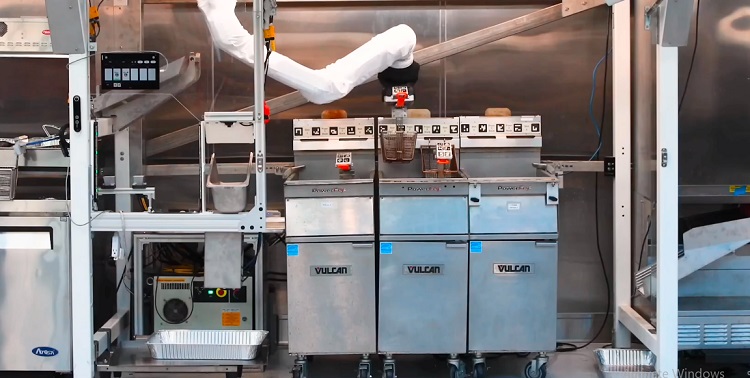The dining establishment, named CaliExpress, is situated in the central area of Pasadena, California. According to proprietor Vic Aulakh, this marks the first instance where an amalgamation of advanced technology has been integrated into a single venue.
Within the burger establishment, there is utilization of a grill robot developed by Cucina, and “Flippy,” a robotic system from Miso Robotics designed for frying tasks.
Remarkably, both automated systems exhibit substantial production capacities: Flippy can generate 250 pounds of French fries per hour, while the grill robot can cook approximately 100 patties within the same timeframe.
Notably, these machines operate continuously without the need for breaks or time off.
Furthermore, Flippy is also present in chain restaurants such as White Castle and Jack in the Box.
Rob Anderson, one of the co-founders of Miso Robotics, revealed that the development of this automation technology commenced six years ago.
CaliExpress: From Robot Chefs to AI Ordering

CaliExpress extends its reliance on automation beyond robot chefs.
The restaurant’s ordering system is driven by artificial intelligence, incorporating facial recognition software managed by Pop ID to record food preferences and facilitate transactions.
The system’s developer emphasizes that its usage is not intended for surveillance purposes.
Despite the automated features, CaliExpress will retain a human workforce.
The restaurant intends to hire only two “back of house” employees responsible for adding the final touches to prepared meals, a considerably smaller workforce compared to a traditional, non-automated kitchen.
In a state where the minimum wage for fast food workers is approaching $20 per hour, the reduced labor costs can be viewed as a positive aspect for businesses.
A recent MIT study, published this week, suggests that while AI can perform a limited number of tasks, in most scenarios, it may not be economically viable to employ AI for essential work.
However, a government report from December 2023 identified AI as a potential threat to financial stability.
Notably, one study indicated that 82% of restaurant jobs could be handled by robotics, a significant consideration in an industry frequently grappling with understaffing issues.
